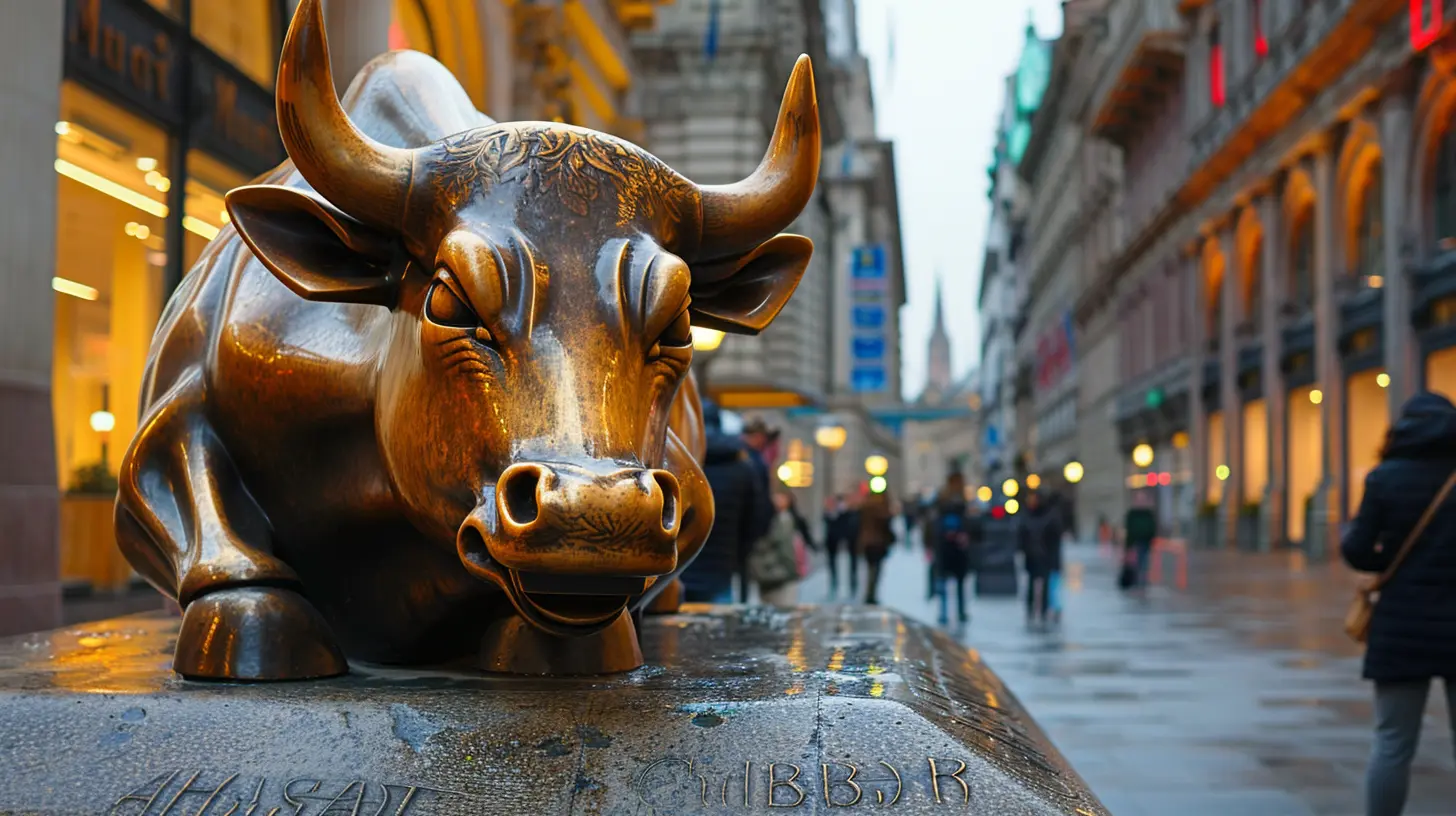How to Analyze a Mutual Fund’s Past Performance
31 July 2025
Ever stared at a mutual fund’s performance chart and wondered, “What on earth am I looking at?” Yeah, we’ve all been there. Mutual funds may wear a pretty face with their graphs and star ratings, but cracking the code behind their past performance isn’t as hard as it seems. It’s more like peeling an onion—layer by layer, you get closer to the truth.
So grab your virtual magnifying glass, and let’s explore how to analyze a mutual fund’s past performance — not just like a number-crunching robot, but like a savvy investor ready to make some smart moves.

Why Past Performance Matters (But Isn’t Everything)
Let’s not sugarcoat it—yes, past performance has a place at the table. It gives you a peek into the fund’s behavior when the markets turned ugly, when they soared, and when they just took a nap. It can show how well a fund manager dances in the storm or cruises in calm waters.But here’s the kicker: it’s not a crystal ball. Just because a fund killed it last year doesn’t mean it’ll be the superhero next year. Still, studying the past gives clues, context, and signs—the financial hieroglyphics you need to decode potential.

Step 1: Look at the Long-Term Track Record
You wouldn’t judge a novel from its first page, right? Same goes for mutual funds. Don’t get lured by that eye-popping one-year return.Think 3, 5, 10 Years
Longer time frames smooth out short-term noise. A fund that consistently performed over five or ten years—even through market crashes and booms—is probably doing something right.Ask yourself:
- Has the fund beaten its benchmark over time?
- Is it delivering steady returns or swinging wildly?
- Does it look like a one-hit-wonder or a rock-solid performer?
Compare Apples to Apples
Always compare funds within the same category. A small-cap growth fund will behave very differently from a large-cap value fund. Don’t mix up the oranges with the bananas.
Step 2: Understand the Fund’s Benchmark
Imagine racing a Ferrari against a bicycle and saying, “Hey, look how fast this Ferrari is!” Well…duh. That’s why benchmarks matter.A benchmark is a standard—usually an index like the S&P 500—that the fund tries to beat. If a fund consistently trails its benchmark, it’s not doing its job. On the flip side, beating it regularly means the fund manager might be onto something.
Pro Tip
If a fund’s benchmark isn't clearly stated, that’s a red flag. A good fund isn’t afraid of comparison.
Step 3: Evaluate Risk-Adjusted Returns
Now we’re diving into the juicy stuff. High returns are great, but what did the fund have to go through to get there? Like climbing a mountain blindfolded—it’s a big achievement, but was it worth the risk?Meet the Sharpe Ratio
This is your risk detective. The Sharpe Ratio tells you how much return a fund makes per unit of risk. A higher Sharpe Ratio = better risk-adjusted performance.In plain speak? If two funds give similar returns, the one with the higher Sharpe Ratio is doing more with less drama.
Standard Deviation = Volatility
This tells you how much the fund’s returns vary from the average. High volatility can mean big swings. Are you cool with that kind of ride?Step 4: Dive into Historical Returns (The Nitty-Gritty)
Looking at average annual returns is nice, but what about the individual years? Did the fund tank during a recession? Did it bounce back or freeze in fear?Year-by-Year Breakdown
Tracking performance during key years like 2008 (crash), 2020 (pandemic), or any major market event helps you judge the fund’s resilience.Were they:
- A warrior during downturns?
- Agile during recoveries?
- Constant in calm years?
That’s the kind of history lesson worth learning.
Step 5: Check Consistency Across Market Cycles
Markets love to ride rollercoasters. It’s all part of the game. What you want to know is how a fund performs in both bull and bear markets.Up Markets vs. Down Markets
Some funds are like sunshine friends—great when everything’s up, but disappear when things get gloomy. Look for funds that can weather storms, not just soak up the sun.Ask yourself:
- Does this fund protect capital in downturns?
- Can it still grab gains when things go green?
Consistency is sexy when it comes to investments.
Step 6: Compare with Peers
In school, you didn’t want the teacher to compare your test score to the top kid in class—but in mutual fund land, it’s necessary.Use Peer Averages
Look at how your chosen fund stacks up against others in the same category. If they’re all struggling, maybe it’s the market. But if your fund is lagging while others thrive? Time to raise an eyebrow.
Step 7: Analyze the Expense Ratio
Ah, the silent killer. That tiny percentage may look innocent, but over time it can eat into your returns like termites in a wooden pillar.Lower Isn’t Always Better… But Usually is
An active fund with a slightly higher expense ratio could earn its keep—if it consistently outperforms. But if the returns don’t justify the fees? That’s like paying premium for a sandwich and getting stale bread.Know what you're paying for and whether it's worth it.
Step 8: Understand the Manager’s Track Record
Behind every fund, there’s a captain steering the ship. That manager’s philosophy, experience, and stability matter—a lot.Is the Manager a Veteran or a Rookie?
A seasoned manager with years at the helm? That’s reassuring. Frequent changes in leadership? Not so much.Think of it like your favorite restaurant—it’s great because the chef knows what they’re doing. If they leave, the quality might drop.
Step 9: Watch Fund Flows and Size
How much money is pouring into or out of the fund? Massive inflows might sound great, but they can make the fund bulky and harder to manage. It’s like trying to steer a cruise ship through narrow streets.On the flip side, constant outflows can indicate waning investor confidence.
Step 10: Don’t Ignore the Fund’s Strategy
Every mutual fund has a strategy—and you better believe it’s more than just picking a bunch of stocks and hoping for the best.Growth vs. Value, Active vs. Passive
Know what you’re getting into. Is it a fund hunting for undervalued gems? Or is it chasing hot growth stocks? Is it passively tracking an index or actively picking winners?The strategy should align with your investment goals, risk appetite, and timeline.
Bonus Tip: Use Tools (But Don’t Drown in Data)
Sites like Morningstar, Yahoo Finance, and fund prospectuses are goldmines of info. But don’t let data overload paralyze you. Stick to the essentials, and trust your judgment.Wrapping It Up: Past Performance is a Story, Not a Guarantee
Analyzing a mutual fund’s past performance isn’t about finding a crystal ball—it’s about reading the story. Every fund has a narrative, shaped by market cycles, managerial choices, and investor behavior.Are you looking at a hero, a survivor, or a one-season wonder? Break down the data, trust your gut, and above all—invest with your eyes open. Because in the end, it’s not about timing the market, it’s about time in the market.
So next time you scan a mutual fund’s fact sheet, you’ll know exactly what numbers matter—and which ones are just shiny distractions.
all images in this post were generated using AI tools
Category:
Mutual FundsAuthor:

Eric McGuffey
Discussion
rate this article
1 comments
Genevieve McLaury
This article offers valuable insights into mutual fund analysis. Understanding past performance is crucial for making informed investment decisions. Thank you for sharing!
August 25, 2025 at 3:13 AM

Eric McGuffey
Thank you for your feedback! I'm glad you found the insights valuable for your investment decisions.


